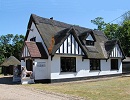Contact Seller
Martlesham Antiques
Tel01394 386732or07889724434Please quote Antiques Atlas.


 Tall Antique Female Figure, Austrian
Tall Antique Female Figure, Austrian
 Large Plaster Composition Of A Classical Maiden
Large Plaster Composition Of A Classical Maiden
 Large Plaster Figure of Woman with Vase c.1900
Large Plaster Figure of Woman with Vase c.1900
 Scagliola Columns
Scagliola Columns
 Antique Victorian Staffordshire Flatback Figure
Antique Victorian Staffordshire Flatback Figure
 Pair of 18th Century Carved Walnut Putti, Tw
Pair of 18th Century Carved Walnut Putti, Tw
 Bachanale by Janle Figure
Bachanale by Janle Figure
 A Chinese 19th century large figurative doll
A Chinese 19th century large figurative doll
 Large bronze Medici Lion
Large bronze Medici Lion
 Art Deco Chrome Silhouette Lady Table Gong 1930s
Art Deco Chrome Silhouette Lady Table Gong 1930s
 Art Deco Fan Dancer, Brass Statue
Art Deco Fan Dancer, Brass Statue
 Antique Buddhist Avalokiteshvara Figure, Asian
Antique Buddhist Avalokiteshvara Figure, Asian
Non UK callers :
+44 1394 386732
or +44 7889724434
or +44 7889724434
19th Century figure of Venus with apple


A 19th Century parian figure of Venus with apple with a turtle by her side standing on a plinth base. Circa 1850.
Parian ware is a type of bisque porcelain imitating marble. It was developed around 1845 by the Staffordshire pottery manufacturer Mintons, and named after Paros, the Greek island renowned for its fine-textured, white Parian marble, used since antiquity for sculpture. It was also contemporaneously referred to as Statuary Porcelain by Copeland. Parian was essentially designed to imitate carved marble, with the great advantage that it could be prepared in a liquid form and cast in a mould, enabling mass production.
Parian ware was utilised mainly for busts and figurines, and occasionally for dishes and small vases, such as might be carved from marble. Several English factories claimed credit for its development. In 1845, as part of a concerted effort to raise public taste and improve manufactures, the Art Union of London commissioned Copeland to make a series of figures after works by leading contemporary sculptors. Mintons and Wedgwood produced similar wares, also known as "statuary porcelain", parian was initially used for relatively high quality work.
5 1/2" x 4" x 17" high.
14cms x 10cms x 43cms high.
SellerMartlesham Antiques
View all stock from
Martlesham Antiques

 Martlesham Antiques
Martlesham Antiques
The Thatched Roadhouse
Main Rd, Martlesham
Suffolk
IP12 4RJ
Tel : 01394 386732
or : 07889724434
Non UK callers : +44 1394 386732 or +44 7889724434
Get directions to Martlesham Antiques
Parian ware is a type of bisque porcelain imitating marble. It was developed around 1845 by the Staffordshire pottery manufacturer Mintons, and named after Paros, the Greek island renowned for its fine-textured, white Parian marble, used since antiquity for sculpture. It was also contemporaneously referred to as Statuary Porcelain by Copeland. Parian was essentially designed to imitate carved marble, with the great advantage that it could be prepared in a liquid form and cast in a mould, enabling mass production.
Parian ware was utilised mainly for busts and figurines, and occasionally for dishes and small vases, such as might be carved from marble. Several English factories claimed credit for its development. In 1845, as part of a concerted effort to raise public taste and improve manufactures, the Art Union of London commissioned Copeland to make a series of figures after works by leading contemporary sculptors. Mintons and Wedgwood produced similar wares, also known as "statuary porcelain", parian was initially used for relatively high quality work.
5 1/2" x 4" x 17" high.
14cms x 10cms x 43cms high.
Price The price has been listed in British Pounds.
Conversion rates as of 23/JAN/2025. Euro & Dollar prices will vary and should only be used as a guide.
Always confirm final price with dealer.
Category Busts and Figures
Date 1850
Early Victorian Antiques Origin English
Item code as256a1374
Status Sold
£435.00 
$536.09 
€515.56 

$

€

Conversion rates as of 23/JAN/2025. Euro & Dollar prices will vary and should only be used as a guide.
Always confirm final price with dealer.
View all stock from
Martlesham Antiques

 Martlesham Antiques
Martlesham AntiquesThe Thatched Roadhouse
Main Rd, Martlesham
Suffolk
IP12 4RJ
Tel : 01394 386732
or : 07889724434
Non UK callers : +44 1394 386732 or +44 7889724434
Get directions to Martlesham Antiques
You may also be interested in
 Tall Antique Female Figure, Austrian
Tall Antique Female Figure, Austrian
 Large Plaster Composition Of A Classical Maiden
Large Plaster Composition Of A Classical Maiden
 Large Plaster Figure of Woman with Vase c.1900
Large Plaster Figure of Woman with Vase c.1900
 Scagliola Columns
Scagliola Columns
 Antique Victorian Staffordshire Flatback Figure
Antique Victorian Staffordshire Flatback Figure
 Pair of 18th Century Carved Walnut Putti, Tw
Pair of 18th Century Carved Walnut Putti, Tw
 Bachanale by Janle Figure
Bachanale by Janle Figure
 A Chinese 19th century large figurative doll
A Chinese 19th century large figurative doll
 Large bronze Medici Lion
Large bronze Medici Lion
 Art Deco Chrome Silhouette Lady Table Gong 1930s
Art Deco Chrome Silhouette Lady Table Gong 1930s
 Art Deco Fan Dancer, Brass Statue
Art Deco Fan Dancer, Brass Statue
 Antique Buddhist Avalokiteshvara Figure, Asian
Antique Buddhist Avalokiteshvara Figure, Asian








